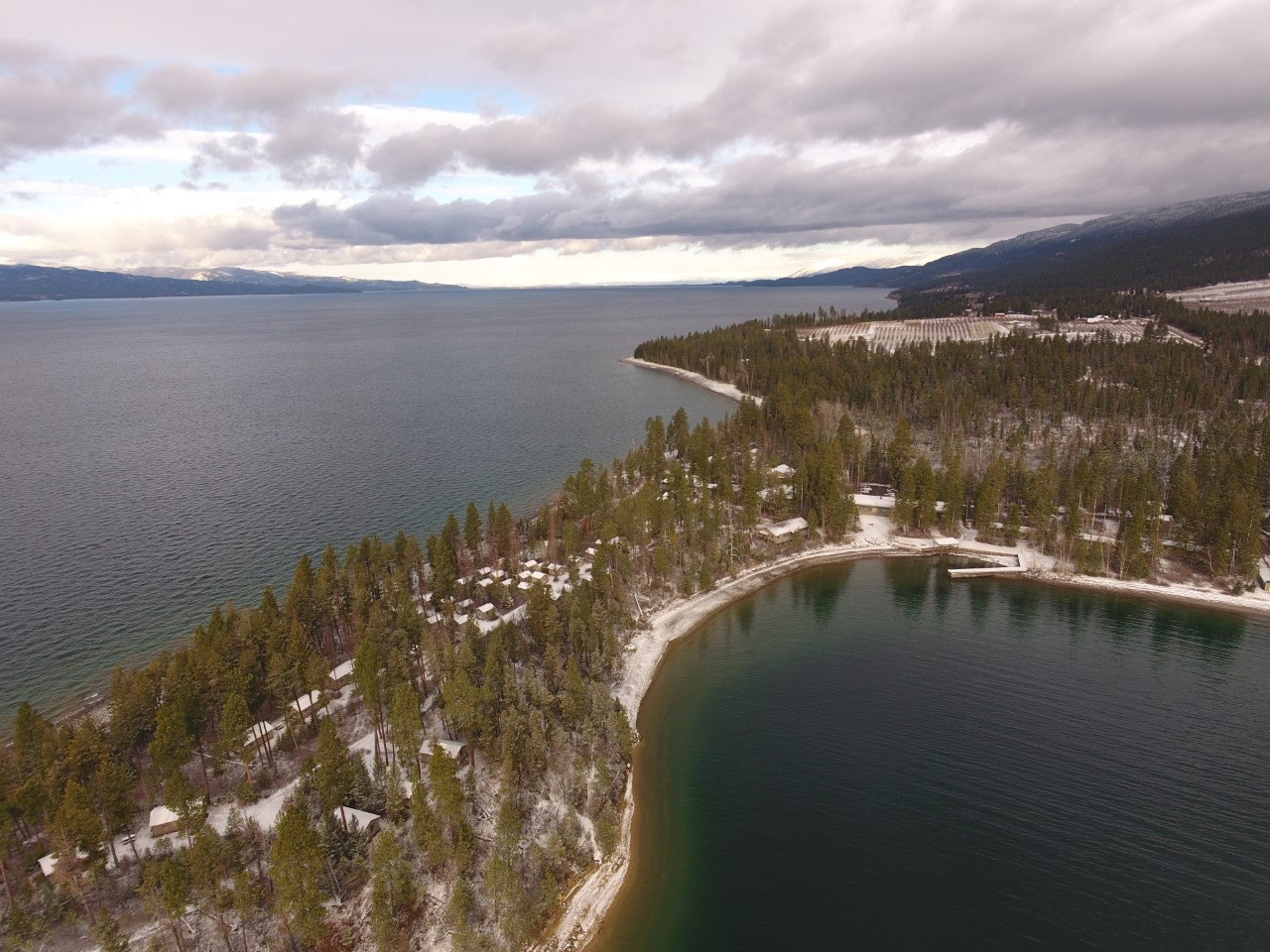Flathead Lake Biological Station: The Sentinel of Flathead Lake Part 1
 The enormity and beauty of Flathead Lake has captured the imagination of Montana residents for generations. As the largest freshwater lake in the western U.S. (outside of Alaska), it’s no surprise that people have been asking and trying to answer questions about this body of water for a very long time.
The enormity and beauty of Flathead Lake has captured the imagination of Montana residents for generations. As the largest freshwater lake in the western U.S. (outside of Alaska), it’s no surprise that people have been asking and trying to answer questions about this body of water for a very long time.
Flathead Lake Biological Station, located on the lake’s east side, is the second-oldest research station in the U.S. Perched on the peninsula of Yellow Bay, the biological station consists of 60 buildings on 80 acres, all devoted to the study of freshwater ecosystems including Flathead Lake. FLBS has collected scientific data on this lake for more than 100 years.
“Flathead Lake is one of the cleanest and most appealing lakes in the world,” said Tom Bansak, freshwater ecologist and assistant director at FLBS. "We are the sentinel of Flathead Lake. We're the ones keeping the finger on the pulse of this wonderful lake."
When it first began in 1899, the Flathead Lake Biological Station was an outpost so remote that visitors had to travel by train, stagecoach, and steamboat to reach it. Entranced by the wonder of Montana’s natural ecosystems, founder Morton Elrod initially set up the biological station in Bigfork.
Elrod was the first professor of biology at the University of Montana, and a prolific scientist. He arrived in Montana in 1887, and spent much of his time on collecting expeditions. He invited along prominent scientists from across the nation, which put the Flathead Lake Biological Station on the map. Elrod’s extensive collection eventually became the foundation for the Philip L. Wright Zoological Museum located on UM's campus today. Elrod also taught photography, started the student newspaper, student government, the Montana Education Association, and the Montana’s first weather station.
"It's amazing what he did, but it was a blank slate back then,” Bansak said. “There was opportunity everywhere."
FLBS carries on Elrod’s legacy today, engaging in a diversity of research and programming that reflects the same wide-ranging approach to science.
"We have a threefold mission of research, education, and outreach," Bansak explained.
The station has changed quite a bit since Elrod’s day. In 1908, the station moved down the shoreline to its current location. An easy drive from Missoula gets you there in less than two hours.
Technology has advanced rapidly since the station was founded. FLBS uses cutting-edge research tools, and even creates their own devices to gather data in as much detail as possible.
"In the old days, you send a graduate student out in the field and you get a couple readings in a day with a handheld meter,” Bansak said. “Now there's microcomputers smaller than your phone that can record 20 variables every millisecond."
The station’s personnel have also grown in numbers in the last few years. The full-time staff has expanded to more than 40 people, which grows to 90 or more during the summer busy season.
"It's been a really fun, exciting time with a lot of new people here,” Bansak said.
Bansak described the station as operating like “an assemblage of small businesses.”
FLBS receives about a quarter of its funding from the University of Montana. The rest comes from outside research funding, as well as summer classes and workshops. The station also relies on philanthropic support from the generous members of the community who support its mission of scientific discovery and keeping Flathead Lake clean and healthy.
“If you live in the Flathead and Mission Valleys and you have a job and you have a home, we're all benefitting from a healthy Flathead Lake,” Bansak said.
The monitoring programs at FLBS keep track of the impacts of different environmental factors, such as algae blooms resulting from human-caused changes in the lake’s nutrient quality. Although the lake was designated as “impaired” by state and federal agencies, its condition is still pristine enough to provide an example of a healthy aquatic ecosystem.
"We have one of the best freshwater ecosystems left in the lower 48, and what we learn here can help us restore and fix other places that are broken, or give us a long-term baseline of how natural rivers and lakes function,” Bansak said.
Learn more about Flathead Lake Biological Station’s scientific achievement, educational mission, and community involvement in Part 2.
By Jackie Bussjaeger
This is Montana Editor
Photo: Flathead Lake Biological Station. Submitted by Ian Withrow.
